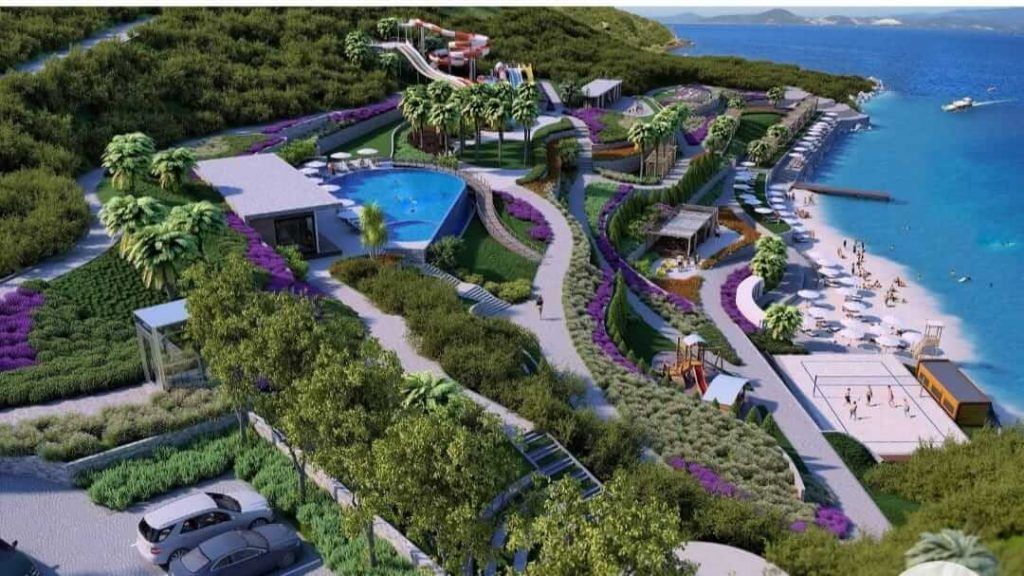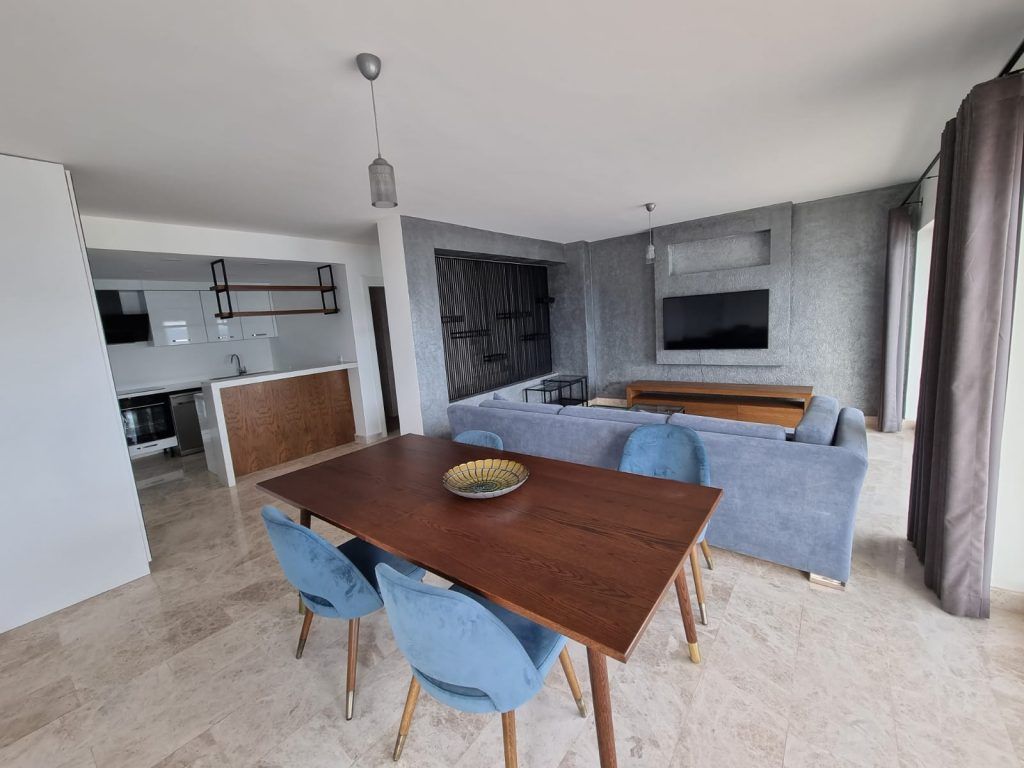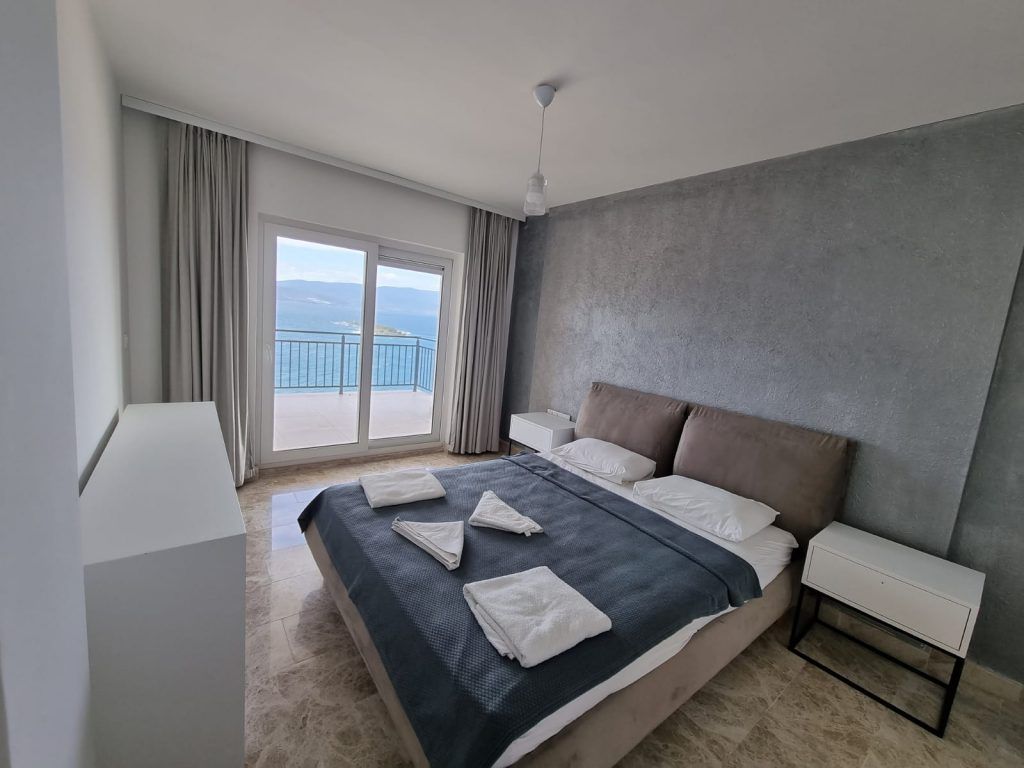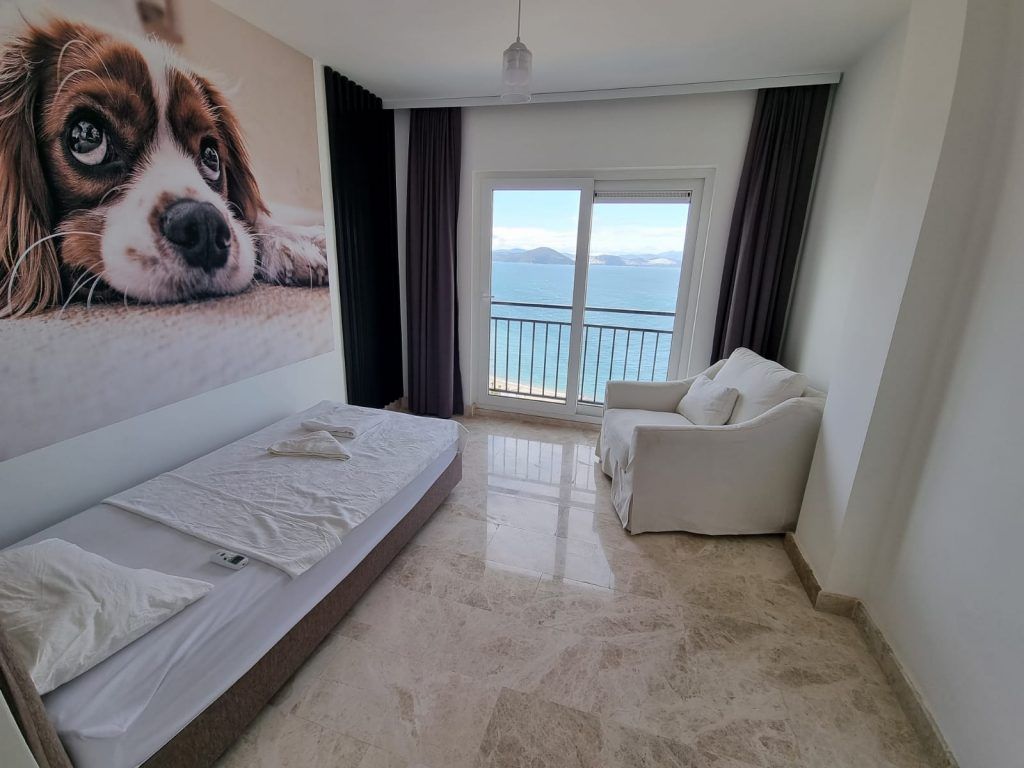LUXURY VILLA WITH PRIVATE BEACH
- City: BODRUM PROPERTY
- Property type: Villa
- Bedrooms: 4
- Offer type: For Sale
- Bathrooms: 4
- Property size: 180 m²
- Property ID: 15708
Features
- Balcony
- Dishwasher
- Garden
- Holiday property
- Investment properties
- Kitchen
- Lawn
- Private Beach
- Security System
Details
Luxury Villa with Private Beach
The project consists of 1 + 1 penthouse and garden floor, 2 + 1 terrace and garden floor, 3 + 1 garden duplex apartments and 4 + 1 triplex twin and fully detached villas with their own closed garage and infinity pool. 1 + 1 apartments in the project are 59-69 square meters, 2 + 1 apartments are 84 square meters, 3 + 1 duplex apartments are 125 square meters, and 4 + 1 and 3-storey villa areas are 179 square meters.
The project was built on a land of 66 thousand square meters at the seafront and consists of 143 residences, all with panoramic sea views, and 22 thousand square meters were allocated to social areas that will only be used by the home owners.
Boutique bazaar consisting of 14 stores and 1 supermarket, Spa and Wellness center, Aquapark reserved for adults and children, semi-olympic indoor swimming pool, infinity pool embracing a magnificent sea view,
3 common pools in different locations within the site, restaurant by the pool and on the beach snack bar, amphitheater, observation terraces, disabled-friendly walking and jogging paths, tennis court, beach volleyball, private beach and swimming pier, yoga and activity areas, lounges with jacuzzi on the beach, indoor and outdoor parking lots and 24-hour security, brings all social life to you with its landscape, maintenance and technical services.
.
Site Features
Outdoor swimming pool
Children’s swimming pool
Children’s playgrounds
• Sauna
Fitness center
• Market
• Security
Camera security
• Volleyball court
• Beach
Sea view
• Parking Garage
• Walking track
Sun terrace
• Amphitheatre
Building Features
• Water tank
• Booster
Generator
Housing Features
Built-in white goods
Parents’ bathroom
Parents dressing room
• Terrace
Balcony
Private swimming pool (for the villa)
Construction Techniques
• Building inspection has been done
• Ground survey has been done
• Compliant with earthquake regulations
• Compliant with the insulation regulation
Bodrum
Jump to navigationJump to search
|
Bodrum
|
|
|---|---|

Sunset overlooking Bodrum
|
|
| Coordinates: 37°02′00″N 27°26′00″ECoordinates: 37°02′00″N 27°26′00″E | |
| Country | |
| Province | Muğla |
| Government | |
| • Mayor | Ahmet Aras[1] (CHP) |
| • Kaymakam | Bekir Yılmaz[2] |
| Area | |
| • District | 656.06 km2 (253.31 sq mi) |
| Population
(2020)
|
|
| • Urban | 181,541[4] |
| Website | www.bodrum.bel.tr |
Bodrum (Turkish pronunciation: [ˈbodɾum]) is a port city in Muğla Province, southwestern Turkey, at the entrance to the Gulf of Gökova. Its population was 35,795 at the 2012 census, with a total of 136,317 inhabitants residing within the district’s borders. Known in ancitent times as Halicarnassus, the city was once home to the Mausoleum at Halicarnassus, also known as the tomb of Mausolus, one of the Seven Wonders of the Ancient World.
The city was founded by Dorian Greeks. It later fell under Achaemenid Persian rule and became the capital city of the satrapy of Caria. Mausolus ruled Caria from here, and after his death in 353 BC, his wife Artemisia built a tomb, called the Mausoleum, for him. Macedonian forces laid siege to the city and captured it in 334 BCE. After Alexander‘s death, the city passed to successive Hellenistic rulers and was briefly an independent kingdom until 129 BCE, when it came under Roman rule.
A series of natural disasters and repeated pirate attacks wreaked havoc on the area, and the city lost its importance by the time of the Byzantine era. The Knights Hospitaller arrived in 1402 and used the remains of the Mausoleum as a quarry to build Bodrum Castle. The castle and its town became known as Petronium, whence the modern name Bodrum. After the conquest of Rhodes by Suleiman the Magnificent in 1522, the town fell under Ottoman control as the Knights Hospitaller relocated to Europe.
By the 20th century, the city’s economy was mainly based on fishing and sponge diving, but tourism has become the main industry in Bodrum since the late 20th century. The abundance of visitors has also contributed to Bodrum’s retail and service industry.
Milas–Bodrum Airport and Kos International Airport are the main airports that serve the city. The port has ferries to other nearby Turkish and Greek ports and islands, Kos being the most important. Most of the public transportation in the city is based on local share taxis and buses.
Etymology
The modern name Bodrum derives from the town’s medieval name Petronium, which has its roots
in the Hospitaller Castle of St. Peter (see history).
In classical antiquity, Bodrum was known as Halicarnassus (Ancient Greek: Ἁλικαρνασσός,[5] Turkish: Halikarnas), a major city in ancient Caria. The suffix -ᾱσσός (-assos) of Greek Ἁλικαρνᾱσσός is indicative of a substrate toponym, meaning that an original non-Greek name
influenced or established the place’s name.
It has been proposed that the -καρνᾱσσός (-carnassos) part is cognate with Luwian word “ha+ra/i-na-sà”, which means fortress.[6] If so, the city’s ancient name was probably borrowed from Carian, a Luwic language native to pre-Greek Western Anatolia. The Carian name for Halicarnassus has been tentatively identified with 𐊠𐊣𐊫𐊰 𐊴𐊠𐊥𐊵𐊫𐊰 (alos k̂arnos) in inscriptions.[7]
History
Ancient era
Halicarnassus (Ancient Greek: Ἁλικαρνᾱσσός, romanized: Halikarnassós, or Ἀλικαρνασσός Alikarnassós; Turkish: Halikarnas), was an ancient Greek city at the site of modern Bodrum in Turkey. Halicarnassus was founded by Dorian Greeks, and the figures on its coins, such as the head of Medusa, Athena, Poseidon, and the trident, support the statement that the mother cities were Troezen and Argos.
[8] The inhabitants appear to have accepted Anthes, a son of Poseidon, as their legendary founder, as mentioned by Strabo, and were proud of the title Antheadae. The Carian name for Halicarnassus has been tentatively identified with Alosδkarnosδ in inscriptions.
In an early period, Halicarnassus was a member of the Doric Hexapolis, which included Kos, Cnidus, Lindos, Kameiros, and Ialysus; but it was expelled from the league when one of its citizens, Agasicles, took home the prize tripod that he had won in the Triopian games instead of dedicating it according to custom to the Triopian Apollo.
In the early 5th century, Halicarnassus was under the sway of Artemisia I of Caria (also known as Artemesia of Halicarnassus [9]), who made herself famous as a naval commander at the battle of Salamis.
Little is known of Pisindalis, her son and successor; but Lygdamis, the tyrant of Halicarnassus, who next attained power, is notorious for having the poet Panyasis put to death and forcing Herodotus, possibly the most well-known Halicarnassian, to leave his native city (c. 457 BC).[10]
- ID: 15708
- Published: April 23, 2021
- Last Update: August 22, 2022
- Views: 589
















